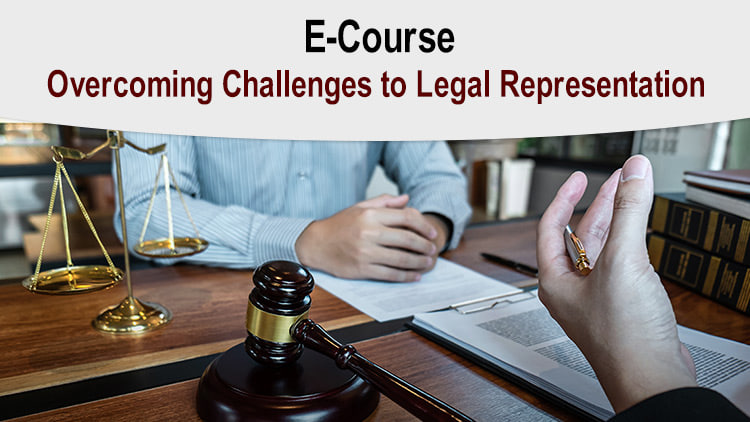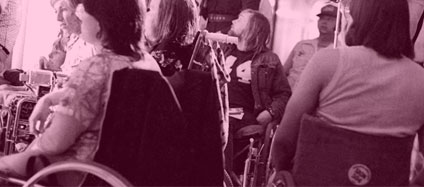5.1: Lesson Objectives
Once you have crafted effective messages that are targeted to your audiences, the next step is to consider the different methods and strategies to deliver your message.
In this lesson, you will learn:
How coalitions might be useful in helping you deliver your message
How to build a coalition
Various methods of communicating a message to different audiences
By the end of this lesson, you will create a specific plan to deliver your message to your target audiences through coalitions and a variety of outreach activities.
5.2: Activist Interviews
Tavaana’s case study on the One Million Signatures Campaign for gender equality in Iran details how the campaign has connected with other groups to form a coalition working towards greater equality:
The campaign’s objective, according to member Fariba Davoodi Mohajer, “was to go from local to regional networking, and from there on to international networking.” As such, the One Million Signatures Campaign has built networks with more narrowly defined women’s rights groups such as the Campaign Against Stoning. Parvin Ardalan says, “The concept of equality increased our sensitivity to inequality in diverse areas… it was the common point between us and students, minorities, and even workers’ movements…” During the 2009 presidential campaign, for example, the movement rallied together over 40 women’s and human rights groups in a coalition that persuaded all the presidential candidates to state their positions on women’s issues – a significant first in Iranian politics. Furthermore, during the post-2009 presidential election unrest, the campaigners created a support network to help detainees’ families, especially women, by accompanying families to prisons, joining protests in front of prisons, and educating protesters about citizens’ rights.
During the following two years, many of the campaign activists had to leave the country, but continued to publicize human rights violations in Iran through the media, civic associations, and international organizations. As one activist says, “The outside world gives us new capabilities. Freedom of expression and the associated opportunities have enabled us to be active and serve as the voice of activists in Iran.” Furthermore, cooperation between these recent exiles and longtime Iranian expatriates has created solidarity between different groups of women in Iran and abroad and enabled them to appeal to the international community more directly.
On a global level, the support of Nobel laureate Shirin Ebadi has also played a crucial role in giving the movement an international profile, while international human rights activists like the Dalai Lama have also expressed their support for the movement. For their work, various members of the campaign have received international recognition, including the 2007 Olof Palme Prize, the 2008 Reporters Without Borders/Deutsche Welle award, the 2009 Simone De Beauvoir Prize for Women’s Freedom, the 2009 Feminist Majority Foundation Global Women’s Rights Award, and the 2009 Glamour Women of the Year Award.
In Tavaana’s interview with Ivan Marovic, Marovic describes how the Otpor movement communicated its message and built a coalition of support for a shared goal:
One of the problems that we faced from the very beginning was that there was a total blackout when it comes to independent media in Belgrade and in bigger towns in Serbia…So what we had to do was to print underground brochures and newspapers, and to put posters on walls and use graffiti and that kind of messaging in order to reach people. However, over time…we spread outside of Belgrade…to the countryside. One thing that we discovered was that there was a lot of local media in really small towns…And these local media actually enjoyed a much higher level of freedom than the media in big cities, as long as they were dealing with local problems. And so by addressing local problems and by organizing campaigns around local problems, we actually managed to create visibility in the local media.
Finally when the regime realized what was going on, they attempted to shut them down. But it was already developing so fast that it was impossible to close all these small newspapers and radio stations all over the place. And when they attempted to do it, people got organized and they were actually protecting these radio stations and newspapers, and preventing government officials from closing them down…
But still, in Belgrade especially, we had one branch of our operations which was called Resistance from the Neighborhood. And this was our attempt to use local neighborhood committees to disseminate information about what was going on, because there was no other way that these people could find out what was going on…
We had to create a very broad coalition for the election, because our main goal was to have one candidate against Milošević, and then this candidate needed to win more than fifty percent of the vote. And then after his victory, we all needed to step in and defend his victory from the electoral fraud. So building the coalition was important on several levels. First on the political level, we needed all the big political factions and political parties, centers of political power, that were opposing Milošević to back this one candidate.
Then on the level of organizations, civil organizations like small community organizations or trade unions or different farmer associations, we needed to create a coalition in order to make this general strike successful. So building this coalition was actually very important. But we didn’t try to build the coalition by bringing everybody to the table and then sitting down and trying to come up with a common strategy and a common goal. Because that would have been a disaster, and it was tried many times before and never succeeded, because people had different ideas and people had different takes on what needs to be done.
So what we did instead was we actually first defined the goal and the method. This was still when we were a very small group, when there was maybe a dozen of us. But we carefully listened to everybody, and we tried to find what would be the common denominator for all these organizations. And when we discovered that one thing that they can all agree on is that Milošević needs to step down and we need to have free elections, we actually decided to make this a goal that we are fighting for and then to ask people to come on board. We also realized that the important thing for our success is the general strike, so we also included a general strike and civil disobedience in response to electoral fraud as the method of struggle.
So from the very beginning, we made sure that we are nonviolent, that we are using elections to defeat the regime, and if the regime doesn’t accept the defeat, that we are using civil disobedience to force the regime to accept. So this was a very simple formula, and we then went to different organizations, different groups, and we tried to persuade them that this is the formula that deserves support. And slowly over time – it took us a long time – we managed to actually bring all relevant organizations and individuals to support this plan. And then when the elections came, that was the plan that we implemented.
As you review these examples, consider the following questions:
What methods did the activist use to deliver the message?
Were her methods effective?
What groups of people or organizations did she work with?
5.3: How Coalitions Can Help
Activists often succeed by building alliances with key individuals or organizations
who provide support to their activism project in a variety of ways. A coalition can be defined as:
An “organization of organizations” united around a common issue and clear goal(s)
A temporary alliance of groups and individuals who band together to achieve political or nonpolitical objectives
As you prepare to develop your coalition strategy, consider the following questions:
Why are coalitions important?
Have you worked with any coalitions in the past?
What have been the advantages?
What have been the disadvantages?
Allies in a coalition can:
Add credibility to your issue. The credibility of each group may be enhanced through its association with the other members of the coalition, and you may be able to reach a more politically diverse set of policy makers.
For example: Religious groups supporting women’s rights issues may be able to successfully reach out to a different set of policy makers than women’s groups alone.
Serve as surrogates to place additional public pressure on those who are the final decision-makers. A large group of organizations and companies may be able to take a stronger stand on a controversial issue together than each could alone.
For example: A coalition of companies from different industries (manufacturing, banks, telecommunications, and so on) can work together to support the same policy from different angles.
For example: Trade unions from different industries can together press for labor rights.
Provide a network of supporters and help you recruit volunteers. Various members of a group can share complex projects (based on experience, expertise, and resources). Expenses can be divided among coalition members, allowing smaller organizations to participate in activities that would otherwise be beyond their capacity.
5.4: Coalition Advantages and Disadvantages
When you bring different groups together, it is worth keeping in mind the disadvantages as well as the advantages of building a coalition.
Advantages
Disadvantages
Enlarge base of support
Achieve policy goals together
Broaden contacts and relationships with policy makers
Provide protection for members who may not be able to take action alone
Magnify existing resources by pooling them together and by delegating work to others in the coalition
Increase resources for an activism campaign
Enhance the credibility and influence of an activism campaign
Help develop new leadership
Assist in individual and organization networking
Can take too much time away from regular organizational tasks
May require compromising positions on issues or tactics
May require members to give in to more powerful organizations
Power is not always distributed equally among coalition members; larger or richer organizations can have more say in decisions
Organizations may not always get credit for the work
Sometimes the coalition as a whole gets recognition rather than individual members
If the coalition process breaks down, it can harm all the members
5.5: How to Build a Coalition
Identify Potential Coalition Members
Deciding which groups to work with will vary depending on the specific objective. Potential coalition partners can include other civil society organizations, community organizers, religious leaders, community leaders, and government officials.
When identifying individuals or organizations that can become members of your coalition, you should not limit yourself to those who traditionally support you. Coalitions can be based on gender, ethnicity, or interests, but you should also think of those groups that have something to gain by helping your activism goal or that may have developed an interest in your activism project owing to some nontraditional or unexpected reason.
You may even find yourself working with people or organizations with whom you rarely agree.
After creating an initial comprehensive list of potential coalition partners, you will need to narrow and target your approach to specific groups. Answering certain questions will assist in the process of determining which groups to reach out to:
Mission Alignment
– How closely are the policy interests of the group in question aligned with your organization?
– Will the groups agree on key messages and arguments?
– Is there the potential for those policy interests to become competitive?
Strategic Alignment
– Will everyone agree on a general strategy?
Group Strengths
– Who brings what to the table?
– Do any of these organizations have a strong volunteer base? Fundraising prowess? Expertise on a specific issue? A unique and complementary policy position or perspective?
Group Weaknesses
– Are there any negatives to having a particular group join the coalition? For example, does the group have a negative reputation? Or is the group at odds with another group that might be more important to your effort?
Group Capacity
– Does the group have the internal capacity to effectively manage its participation in the coalition
Future Conflicts
– Is it possible that your organization will clash with this group in the future? Note that this is not necessarily a reason to not approach them. In fact, coalitions comprised of groups with different views often look very credible. However, it is important to consider these potential future conflicts at the outset
“Getability”
– Are there groups that will be easy to get? These entities might be good to ask first, to create momentum and credibility.
Recruit Coalition Partners
Once you have identified potential coalition partners and how they can help, your next step is to approach them and persuade them to join your coalition, through the following process:
1. Create a comprehensive coalition list with contact information.
2. Coordinate a meeting with the appropriate leaders of the organization for individuals.
3. Start incorporating groups with which you have an established relationship or affiliation into your activism coalition.
4. Make sure you provide all the information they need and ask for. Be responsive, and keep them informed.
5. Try to persuade them to support your activism project.
6. Incorporate them into your team.
In the process of developing a coalition, the group must have a clear understanding of the structure of the group and the allocation of decision-making authority: how decisions will be made, how information will be shared, how coalition activities will be paid for, whether is goals and objectives are consistent with those of your activism campaign, and whether the coalition can meet obligations of time and resources.
5.6: Outreach Activities
Once you have developed your network, the next step is to develop an outreach plan to communicate your message in multiple venues. Your network will be instrumental in delivering the message far and wide.
Most methods of delivering your message are divided into four main categories:
1. Direct contact with your primary audience
– Meetings with government officials
– Community meetings
– Meetings with key leaders – that is, heads of non-government organizations (NGOs), women leaders, religious leaders, and so on
– Speeches to NGOs
2. Earned and paid media
– Earned media refers to when the media and social networks discuss you or your cause for free. These may include an article about your press conferences, one-on-one interviews, opinion pieces in newspapers, or letters to the editor.
– Paid media refers to newspaper space, internet banner ads, or radio/TV time that you pay for.
3. Promotional activities
– Promotional materials such as brochures, leaflets, and flyers.
– Public events to draw attention, such as protests, petitions, or sit-ins.
4. Coalition activities
– Surrogates speaking on behalf of your issue
– Public endorsements by public figures or organizations
Determining which of these methods to prioritize will depend on who your audience is, and how to reach them most effectively.
It is important to be aware of social and political factors in your country that may influence the effectiveness of certain methods of communicating. Use the supplement on civic environment to analyze the possibilities and limitations of your environment and decide the best method for delivering your message.
In summary: Your message should be communicated through multiple methods.
You need to understand your audience and what venue best reaches them.
You need to analyze the realities in your country – which communication venues are easily accessible and which are not.







